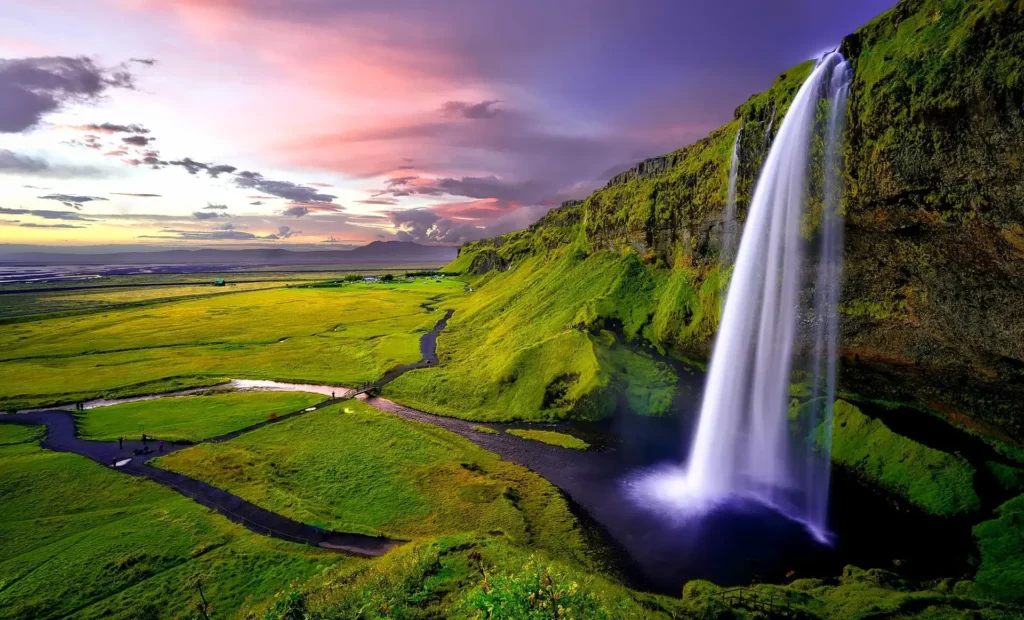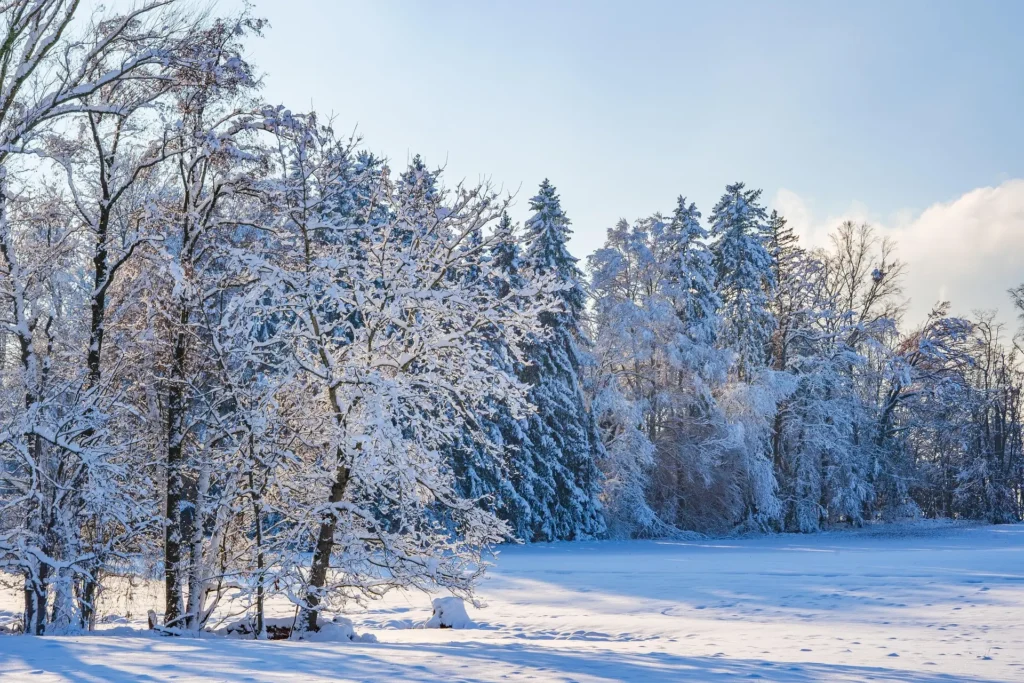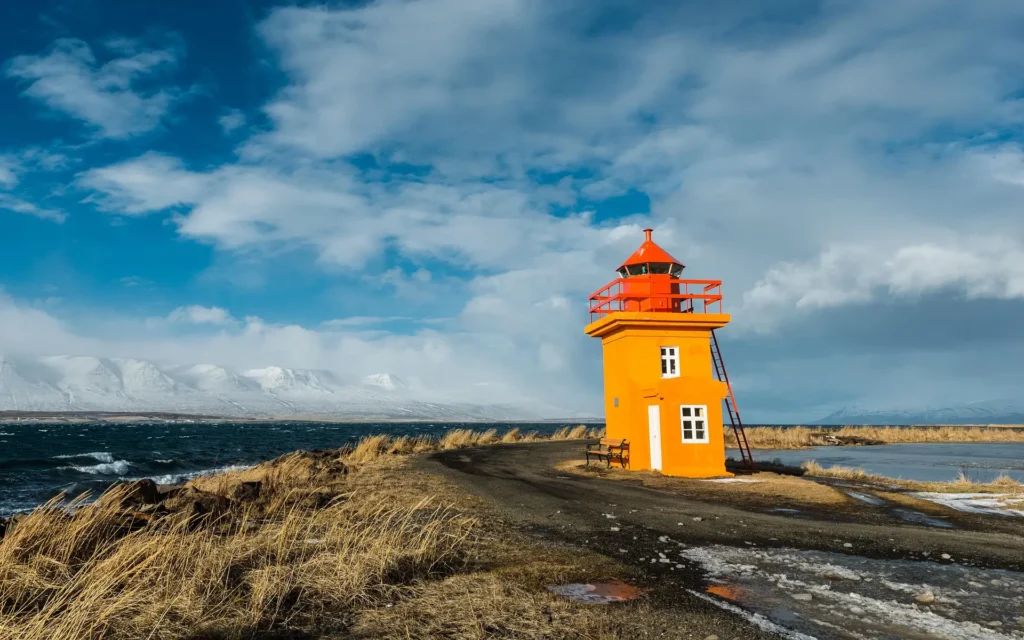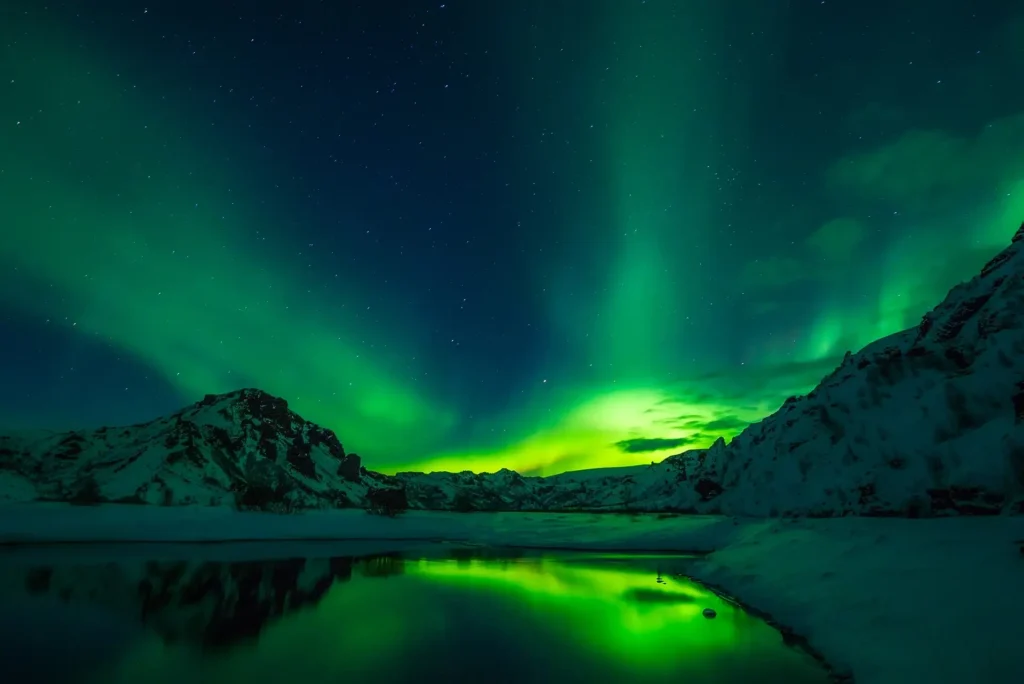I’ve always been drawn to Iceland’s unique experiences. I’m excited to share my knowledge with you. The best time to travel to Iceland depends on what you want to do. Whether it’s seeing the Northern Lights or enjoying summer festivities, I’ve got you covered.
When planning your trip, think about what you’re interested in. This guide will help you find the best time to travel to Iceland to see its wonders. You’ll learn when to go for an unforgettable adventure.
Table of Contents
Introduction to Iceland Travel
In this article, I’ll share my insider tips for planning an amazing trip to Iceland. We’ll cover the best time to visit, the iceland travel guide 2025, and more. Get ready to make the most of your journey.

Key Takeaways
- Determine your interests and preferences to decide the best time to travel to iceland
- Research and plan ahead to make the most of your iceland travel guide 2025
- Consider the time of year that suits your activities and interests when deciding when to visit iceland
- Understand the best time to visit iceland to explore the country’s natural wonders and culture
- Plan an unforgettable adventure that meets your needs and exceeds your expectations
- Stay informed about the best time to travel to iceland to make the most of your trip
Here you will find another article that will be very useful to you.
https://cinematictravel.com/https-cinematictravel-com-best-places-to-live-in-italy/
Understanding Iceland’s Distinct Seasons
Planning a trip to Iceland means understanding its seasons. The country’s location near the Arctic Circle leads to unique seasons. The best time to travel to Iceland for seeing the Northern Lights is during winter, while summer offers endless daylight and is perfect for outdoor activities.
Choosing between winter and summer depends on what you want. Summer is great for hiking with its long days. However, if you’re looking for the best time to travel to Iceland to witness the Northern Lights, winter is your ideal season.
The Midnight Sun Period
The Midnight Sun period lasts from May to August. It’s a time of constant daylight. This makes it perfect for outdoor fun like hiking and camping.
The Northern Lights Season
The Northern Lights season runs from September to March. This is the best time to see the lights in Iceland. The nights are dark, making it ideal.
Shoulder Seasons Explained
The shoulder seasons are April and September. They offer mild weather and fewer crowds. It’s a great time to visit popular spots.
| Season | Months | Characteristics |
|---|---|---|
| Midnight Sun | May-August | Constant daylight, ideal for outdoor activities |
| Northern Lights | September-March | Dark nights, ideal for seeing the Northern Lights |
| Shoulder Seasons | April, September | Mild weather, smaller crowds, ideal for visiting popular attractions |
Best Time to Travel to Iceland for Different Activities

Planning a trip to Iceland means knowing the best times for activities. Summer is great for hiking or glacier hiking. Winter is better for snorkeling or diving because of clearer waters.
Here’s a guide to help plan your trip:
- Hiking and glacier hiking: June to August
- Snorkeling and diving: October to April
- Northern Lights: September to April
- Whale watching: May to September
Researching the best times for activities is key. This way, you can have an amazing trip. Iceland offers something for everyone, whether you’re traveling in winter or summer.
| Activity | Best Time |
|---|---|
| Hiking and glacier hiking | June to August |
| Snorkeling and diving | October to April |
| Northern Lights | September to April |
| Whale watching | May to September |
Summer in Iceland: Peak Season Benefits and Drawbacks

Planning a trip to Iceland, I weigh the good and bad of summer visits. The long days and mild weather make it perfect for outdoor fun. But, I must also think about the crowds and higher prices.
The best time to travel to Iceland for good weather is in summer, with highs around 12°C (54°F) in July and August. The Midnight Sun adds to the charm, making it great for hiking and exploring. Yet, I must plan to avoid the crowds during this peak season.
Summer Temperature and Daylight Hours
The summer solstice brings 24-hour daylight, perfect for endless adventures. To handle the crowds, I’ll book ahead. This way, I can enjoy Iceland without the chaos.
Popular Summer Activities
Some top summer activities in Iceland include:
- Hiking and camping in the beautiful landscapes
- Exploring the stunning waterfalls and black sand beaches
- Taking a guided tour to witness the breathtaking scenery
Managing Peak Season Crowds
To deal with the crowds, I’ll plan my trip smartly. I’ll avoid busy times and spots. This way, I can enjoy Iceland’s summer beauty without the crowds.
| Month | Average High Temperature (°C) | Daylight Hours |
|---|---|---|
| June | 12 | 24 |
| July | 13 | 24 |
| August | 12 | 20 |
Winter Adventures: What to Expect
Planning a trip to Iceland in winter is exciting for those who love snow and the Northern Lights. The best time to travel to Iceland for an enchanting winter experience is during the colder months. Winter in Iceland is quiet and peaceful, with short days and cold weather. It’s a unique time to visit, especially for those wanting to witness the Northern Lights.
To enjoy your winter trip to Iceland, it’s key to plan well. Here are some tips:
- Research the best winter activities, such as ice skating, snowmobiling, or dog sledding
- Check the weather forecast and road conditions before heading out
- Pack warm clothing, including a good coat, gloves, and hat
December, January, and February are the best months for winter fun in Iceland. You can see the Northern Lights and enjoy the snow. Plan your trip to include both adventure and downtime.
| Month | Activity | Weather |
|---|---|---|
| December | Snowmobiling, ice skating | Cold, snowy |
| January | Dog sledding, Northern Lights | Very cold, dark |
| February | Skiing, snowshoeing | Cold, snowy |
By following these tips and choosing the right months, your winter trip to Iceland will be unforgettable.
Chasing the Northern Lights: Optimal Timing

Planning a trip to Iceland, I’m looking for the best time to travel to Iceland to see the Northern Lights. These lights are a natural wonder seen in Iceland from September to April, making it a top attraction for many. I’ll share the best time to travel to Iceland for the Northern Lights, along with the best months, locations, and photography tips to see them.
Best Months for Aurora Viewing
The best time to travel to Iceland to see the Northern Lights is from September to April. The peak season is from December to March. During these months, the nights are darker and the skies clearer, making it easier to spot the lights. For Northern Lights Iceland travel tips, the winter months are the best time to travel to Iceland for a chance to witness this natural wonder.
Top Locations for Northern Lights
Top spots for Northern Lights sightings in Iceland include Reykjavik, Akureyri, and the Westfjords. These places have little light pollution, making it easier to see the lights. I’ll include these spots in my iceland travel guide 2025.
By following these northern lights iceland travel tips, I’ll make the most of my trip. I’ll increase my chances of seeing this natural wonder. With the right iceland travel guide 2025, I’m ready to experience the magic of the Northern Lights.
Weather Patterns and What to Pack
Planning a trip to Iceland means understanding the weather. The weather can change quickly, with sudden drops in temperature and rain. Knowing what to expect and how to pack is key. It’s important to plan your trip based on the season to ensure you’re visiting during the best time to travel to Iceland.
Iceland’s weather is always changing. Knowing the monthly temperatures helps you pack right. Summer is great for mild weather and long days. Winter is the best time to travel to Iceland for seeing the Northern Lights.
Monthly Temperature Breakdown
Here’s what you can expect each month:
- January: Cold and icy, with average temperatures around 32°F (0°C)
- February: Still cold, but with increasing daylight hours, average temperatures around 34°F (1°C)
- March: Temperatures start to rise, with average temperatures around 39°F (4°C)
- April: Mild temperatures, with average temperatures around 45°F (7°C)
- May: Pleasant temperatures, with average temperatures around 52°F (11°C)
- June: Warmest month, with average temperatures around 57°F (14°C)
- July: Still warm, with average temperatures around 55°F (13°C)
- August: Temperatures start to drop, with average temperatures around 50°F (10°C)
- September: Cooler temperatures, with average temperatures around 45°F (7°C)
- October: Colder temperatures, with average temperatures around 39°F (4°C)
- November: Cold and icy, with average temperatures around 34°F (1°C)
- December: Coldest month, with average temperatures around 32°F (0°C)
Essential Packing Lists by Season
Right gear is crucial for any trip to Iceland. Here are essentials for each season:
- Winter: Warm clothing, including a parka, gloves, and hat
- Summer: Lightweight clothing, including t-shirts and shorts
- Spring and Fall: Layers, including a waterproof jacket and insulated pants
Budget Considerations Throughout the Year
When planning a trip to Iceland, it’s key to think about the travel seasons and their impact on your budget. Prices for places to stay, tours, and activities change a lot throughout the year. To get the best experience, it’s important to plan early and consider the best time to travel to Iceland for cost-saving opportunities. Knowing when to visit popular spots like glaciers is also crucial.
One smart way to cut costs is to look for off-season deals. Visiting glaciers during the shoulder season can be cheaper and less crowded, making it the best time to travel to Iceland if you’re on a budget. Also, choosing budget-friendly tours and accommodations helps keep your expenses down. Here are some tips for planning your trip:
- Research and book accommodations and tours in advance to get the best prices.
- Consider traveling during the off-season or shoulder season to save money.
- Look for package deals that include accommodations, tours, and activities to get the most value for your money.
By understanding how to plan your trip and taking advantage of off-season prices, you can have a great time in Iceland without breaking the bank. The best time to travel to Iceland for budget-friendly options is during the off-season. Always research and book early to find the best deals. Don’t hesitate to explore different options to find what fits your budget and preferences, ensuring you get the most out of the best time to travel to Iceland.
My Recommended Itineraries by Season
Planning your trip to Iceland? Think about the best time to go and what you want to do. The iceland travel guide 2025 helps you decide. It’s great for summer road trips or winter adventures. I’ll share my top tips on routes, activities, and places to stay.
Each season in Iceland offers unique experiences. Summer is perfect for road trips and seeing nature. Winter turns Iceland into a snow wonderland, great for snowmobiling and ice caving. Here’s what to consider for each season:
- Summer (June to August): Ideal for road trips, hiking, and exploring the countryside
- Winter (December to February): Perfect for snowmobiling, glacier hiking, and ice caving
- Spring (March to May) and Fall (September to November): Great for exploring the city, visiting museums, and enjoying outdoor activities like horseback riding
Choosing the right time and planning your trip well lets you enjoy Iceland fully. The iceland travel guide 2025 will help you create an amazing adventure.
| Season | Best Activities | Accommodation Tips |
|---|---|---|
| Summer | Road trips, hiking, exploring | Book accommodations in advance, in popular spots like Reykjavik |
| Winter | Snowmobiling, glacier hiking, ice caving | Choose places with good heating and insulation. Guided tours are a good idea. |
| Spring and Fall | Exploring the city, visiting museums, horseback riding | Find places with flexible cancellation policies, for weather changes. |
Natural Phenomena and Special Events in 2025
I’m planning a trip to Iceland and I’m excited to see the unique sights and events in 2025. The best time to travel to Iceland to see the Northern Lights is from September to March. This is when the nights are dark and the skies are clear. The Iceland travel guide 2025 also talks about this, giving tips for my trip, ensuring I visit during the best time to travel to Iceland for the best experience.
Choosing the right time to visit Iceland is important. For example, June is great for the Midnight Sun. And the winter months are perfect for seeing the Northern Lights. Here are some key events to look out for in 2025:
- Summer solstice (June 20-22)
- Winter solstice (December 21-22)
- Northern Lights season (September-March)
To fully enjoy my trip, I’ll check the iceland travel guide 2025 for updates. By planning ahead and knowing the best time to see northern lights in iceland, I’ll see everything Iceland has to offer.
| Month | Natural Phenomena | Special Events |
|---|---|---|
| June | Midnight Sun | Summer solstice |
| September | Northern Lights | Start of Northern Lights season |
| December | Northern Lights | Winter solstice |
Transportation and Accessibility by Season
Planning a trip to Iceland in winter means thinking about how to get around. The best time to travel to Iceland depends on what you like. Knowing about road conditions and travel options helps make your trip better. To plan well, look into different ways to travel, like buses and tours, especially if you’re visiting during the best time to travel to Iceland for winter activities.
Driving in Iceland can be tough, but it’s doable with the right info. Here are some important points to remember:
Road Conditions Throughout the Year
- Winter: Some roads may be closed due to snow and ice, but many are still accessible with the right vehicle and equipment.
- Summer: The roads are generally clear and easy to navigate, making it an ideal time for road trips.
- Shoulder Season: The roads can be unpredictable, with a mix of snow, ice, and rain, so it’s essential to be prepared.
Domestic Travel Options
In Iceland, you can travel by flying, bus, or car. Each has its own pros and cons. Your choice depends on your budget, time, and what you prefer.
Tour Availability
Tour options change with the seasons. More tours are available in summer, fewer in winter. If you’re visiting in winter, book tours early to get a spot.
Conclusion: Making the Most of Your Iceland Adventure
When planning your trip to Iceland, think about what you want to see and do. The best time to travel to Iceland depends on your interests. You might love the Northern Lights in winter or the long summer days.
Iceland is full of natural wonders and cultural experiences. By knowing the seasons and activities, you can plan an amazing trip. Whether it’s winter fun or a summer drive, there’s always something to do during the best time to travel to Iceland.
So, get your bags ready and start exploring. Iceland awaits with unforgettable memories. These will stay with you long after you’re back home.
FAQ
What is the best time to travel to Iceland?
The best time to visit Iceland varies based on what you want to do. From May to August, you can enjoy long days and mild weather. This is the Midnight Sun period.
From September to March, you can see the Northern Lights. The shoulder seasons in April and September offer good weather and lower prices.
When is the best time to see the Northern Lights in Iceland?
The best time to see the Northern Lights is from September to March. September, October, March, and April are the best months. These months have clear skies and frequent activity.
What should I pack for a summer trip to Iceland?
For summer in Iceland, pack layers. Include thermal base layers, fleece jackets, and waterproof outerwear. Don’t forget comfortable hiking boots, sunscreen, and a hat.
The weather can change quickly. Be ready for warm and cool temperatures, rain, or wind.
What are the best activities to do in Iceland during the winter?
Winter in Iceland is great for visiting the Blue Lagoon and exploring ice caves. Glacier hikes and Northern Lights sightings are also popular.
Try snowmobiling, ice climbing, and relaxing in thermal pools. These activities are unique to winter.
How can I save money on my Iceland trip?
To save money, visit in April or September. Prices are lower and there are fewer tourists. Look for budget-friendly places to stay, like hostels or Airbnbs.
Book tours and activities early to get discounts. This can help you save a lot.
What are the best road trip routes in Iceland?
The Ring Road is a must-see, circling the island. The Golden Circle shows off famous natural wonders. The Snaefellsnes Peninsula is known for its beautiful coastlines.
What are the top natural phenomena and events happening in Iceland in 2025?
In 2025, Iceland will have many natural wonders and events. You can see the Midnight Sun from May to August. The Northern Lights will be visible from September to March.
There will also be cultural festivals and events throughout the year. It’s a great time to visit.
https://www.intrepidtravel.com/en/iceland/best-time-to-visit-iceland
